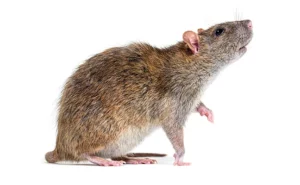
While at the National Pest Management Association’s (NPMA) Legislative Day event in Washington, D.C., in March, I hung out with several personnel from the National Wildlife Control Operators of America (NWCOA) — including President Drew Cowley, Vice President Chris Lunn and Training Coordinator Jim Goins. We all kept busy networking and interacting with other pest and wildlife management professionals, but we found ourselves participating in a rather odd activity during breaks: counting Norway rats.
I fully admit to starting the “game,” as I was the first to arrive. When asked about our accommodations in a group text, I gave the total number of Rattus norvegicus observed while sitting on a back deck overlooking a residential alleyway.
While none of us are shocked much by wildlife, obviously, the numbers and boldness of the rats in our nation’s capital were surprising. Rats during the day, rats around people, rats in a valet parking lot, rats in quiet places, rats in busy areas, rats running outside restaurants. They were everywhere!
Only in Washington, D.C., have I seen roadkill rats.
Evidence was obvious
Bait stations were also everywhere. Placement varied from very well done to “what were you thinking.” But with the sheer volume of burrows and rats, I’m sure clients were pushing technicians to place more stations. Their options are limited, with the optimal locations already having stations in place.
The high rat numbers also resulted in some loose bait visible in and around burrows. Our thoughts were that this was the work of homeowners or maintenance personnel, not professionals.
Seeing the number of stations and still so many rats was surprising. I looked at their rules for wildlife control operators (WCOs), and while it was not clear on rats, there is a restriction on body-gripping and -crushing traps for wildlife in place. The Washington, D.C., Council implemented this rule. It is a prime example of local governments creating regulations based not on science but on emotion. This was a major point being made to legislators by most Legislative Day attendees when we went to Capitol Hill and visited our state representatives.
Need for involvement
There are lethal resetting traps on the market that kill quickly and could add another level of control that none of us observed being used in the district. (To my Washington, D.C.-based colleagues: Please let me know if such measures are in place and we just didn’t see them.) While they can be labor-intensive, they could help cull the population, at least.
It is unclear from the official wildlife control rules in Washington, D.C., whether such traps are allowed. And therein lies the problem: Local officials make rules based on recommendations from animal rights groups or “concerned citizens” rather than public health experts who can back up their recommendations with scientific studies to determine effective and safe practices.
If Washington, D.C., is an example of what happens when local governments get involved in pest or wildlife control rules, it should be a cautionary tale for all of us.
While often well-meaning, these restrictions can lead to more significant risks as homeowners, maintenance personnel and others take matters into their own hands out of frustration. They might use products and tools without training and ignore product labels. The result could be worst-case scenarios.
It is a prime example of why we all should become involved in our national and state pest control associations. Losing effective and essential tools makes our jobs harder and raises public health risks through higher levels of pests.
Leave A Comment